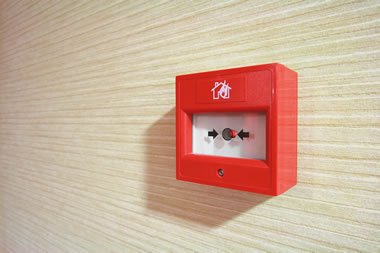Legionella is a bacterium that is commonly found in natural water sources such as lakes, reservoirs and rivers, usually in small concentrations that pose no threat to public health. However, once this water enters man-made water systems such as fire sprinkler systems, under certain environmental conditions there is a risk that any Legionella bacteria that are present in the water may proliferate, increasing the risks associated with Legionnaires’ disease. The UK’s Health & Safety Executive (HSE), in their paper ‘A revised programme of interventions for the control of legionella risks in workplaces’ classify artificial water systems into three risk groups, with level 1 being the highest risk. Fire fighting sprinkler systems fall into risk category level 3. This is for systems that may use water for cooling and misting and commonly allow water to stagnate and generate aerosols. Fire sprinkler systems do present a legionella risk and so sprinkler maintenance routines should be amended and incorporated in to the legionella monitoring and control programmes that you currently have in place. There are a number of important guides and regulatory documents that should be referred to when managing the risk of legionella in fire sprinkler systems: For human infection of Legionnaires’ disease to occur from fire fighting sprinklers, any Legionella bacteria present in the sprinkler system water would have to do three things: 1. Grow to a level where they are infectious – There is a good chance that legionella will be present in most water systems. However, usually they will be present in small enough numbers not to pose any threat to human health. What has to be ascertained however, is whether conditions in the fire sprinklers could support the growth of legionella populations. Whilst generally the temperature in fire sprinkler systems will remain low enough as not to support the growth of legionella bacteria, it may contain distribution pipework that may become warmer. Other factors to consider are that most sprinkler systems contain stagnant water and have some degree of agitation in storage tanks during regular pump flow tests. Generally, fire sprinkler systems will not normally support the growth of legionella but there is a risk, especially due to poor maintenance of the systems. 2. Be present in an aerosol – Droplet formation and dispersal can occur in four main situations: i. Faulty plumbing Generally the droplets formed by sprinkler systems are too large, but there remains the possibility that small enough droplets could be formed from larger ones breaking up or evaporating. 3. Be inhaled by an individual susceptible to infection – The risk of anyone being infected during the operation of sprinkler systems is reasonably low due to the fact that when a fire sprinkler system is triggered, occupiers of the building will have been evacuated and only protected people (e.g. firefighters) will be in the vicinity. However, it is important to note that there remains a risk to those involved in fire sprinkler maintenance, testing and cleaning of systems. Procedures for fire sprinkler maintenance should be amended to incorporate the legionella monitoring and control programme that you currently have in place. You should: How training can help you manage your legionella risks more effectively With fire sprinkler systems representing a legionella risk that could cause a potentially lethal outbreak of Legionnaires’ disease and result in prosecution, effectively managing the risks involved is vital. As experts in the risk management of Legionnaires’ disease, legionella and other water-borne pathogens, we can help devise comprehensive risk management programmes dealing with water safety issues in industrial, commercial, healthcare and institutional facilities. Our services include risk assessments, legionella testing, City & Guilds accredited training and much more. To find out how to safeguard your facilities and ensure compliance with the legislation call us today on 0330 223 36 86 or get in touch here … contact us Manchester Tel: +44 (0) 330 223 36 86 London Tel: +44 (0) 203 637 47 48Legionella & Fire Sprinkler Systems – Is there a Risk?

What the Health & Safety Executive say about sprinklers
Assessing and managing legionella risks in fire sprinklers
Catching Legionnaires’ disease from fire sprinkler systems
ii. During the cleaning or maintenance of pumps/system
iii. The operation of sprinklers
iv. Accidental dischargeProactively managing legionella risks
How Legionella Control International can help?
Warren Bruce Court
Warren Bruce Road
Manchester M17 ILB
United Kingdom
Kemp House
152 City Road
London EC1V 2NX
United Kingdom

 Devastating Effects of Legionnaires’ Disease: A Victim’s Family Speaks
Devastating Effects of Legionnaires’ Disease: A Victim’s Family Speaks 